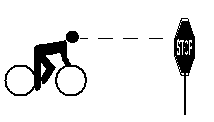
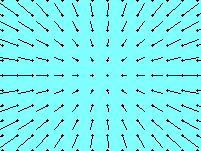
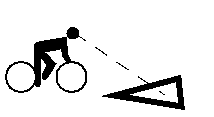
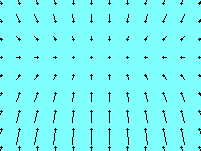
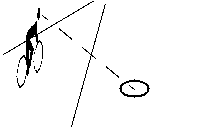
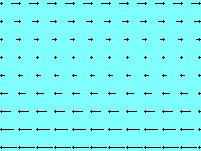
My research is mainly in computer vision, but I am interested in general principles that apply also to biological vision. My particular areas are the use of motion in visual systems, and low-level mechanisms for the pick-up of visual information.
These interests are illustrated by my work on first-order optic flow. Optic flow is, roughly, a representation of how the retinal image changes as we and other objects move about. Different sorts of relative motion produce different forms of optic flow. For example, the figures on the right show the patterns of image motion resulting from the situations shown on the left.

| 
|

| 
|

| 
|
These first-order flow patterns can be described in terms of dilation, rotation and two components of shear. If these quantities can be measured, then useful information for the control of action becomes available. For example, for direct approach, as in the top picture, the dilation gives the cyclist an estimate of the predicted time to collision with the sign.
I have developed a theoretical framework describing how first-order flow provides useful predictive information for the control of action in general. The theory shows how to obtain estimates of generalised time to contact, projected trajectory, and surface tilt. (Further information about this is available here, and a presentation I gave at the ECVP 2000, the European Conference on Visual Perception, is here.)
Computer experiments show that these variables provide enough information for docking manoeuvres in 3-D: a simulated insect can make an accurately controlled landing along the normal to a surface relying almost entirely on the information from first-order flow.
It is first necessary, however, to measure the dilation, shear and rotation of the image, and this is not a simple problem. Since the flow speed increases with distance from the centre of the pattern, it is helpful to measure the image brightnesses at points that are spaced further apart as the distance from the retinal centre increases. (This is analogous to measuring the speed of a snail over a few centimetres but the speed of a horse over a few furlongs.) This suggests that the image should be sampled using a log-polar sampling pattern instead of the conventional raster-scan grid used in most computer vision. I have demonstrated practical gradient-based first-order flow measurement using log-polar sampling.
Log-polar samples | Conventional grid |
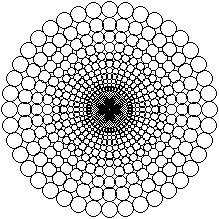
| 
|
Like the log-polar pattern, the human retina is foveated: it has a high-acuity central area.
The figure shows contours of cone cell density. In fact, the density of the ganglion cells which transmit information out of the retina is very close to log-polar. (The cone cells are somewhat more evenly distributed.) From Østerberg, G. (1935) "Topography of the layer of rods and cones in the human retina." Acta Ophthalmologica, 13 Suppl. 6, 1102. | 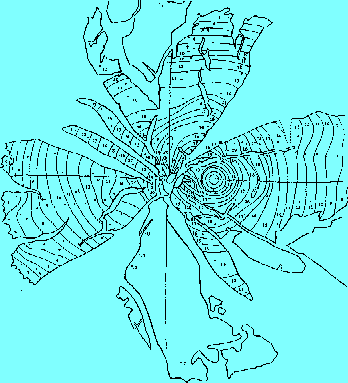 |
Foveal vision goes hand-in-hand with the ability to make eye movements: neither makes sense without the other. These are fundamental features of human vision, but the capabilities of foveal computer vision systems with tracking, mobile cameras are only beginning to be explored. My research extends beyond first-order flow to general questions aimed at realising this potential: the themes of optic flow, task-directed information pickup, foveal vision and eye (or camera) movements place my work firmly in the general area of dynamic vision.
Back to my home page.
Here is our vision group page.